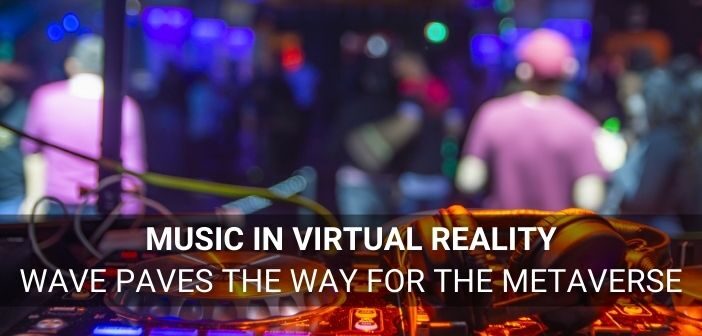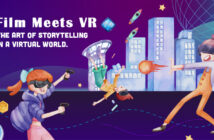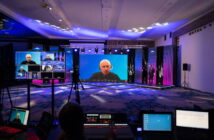Virtual Reality is taking the entertainment industry by storm, becoming more and accessible for small players in the market with each passing day. This trend has been made possible, in part, by a host of new creator-focused ventures that are making it easier to produce VR-ready experiences for a variety of audiences.
One such venture is Wave (formerly TheWaveXR), a live performance production startup that is making it possible for artists big or small to launch interactive performances online. The startup has gained massive popularity since they started in 2016, having gone onto host megastars like The Weeknd, John Legend, and Justin Bieber.

Image Credits: tirachard from Adobe Stock
As music enters the metaverse, startups like Wave are overhauling the way artists and their audiences interact – but this transition is not without its pitfalls.
Music in Virtual Reality – How Wave has changed Live Performances
Wave follows a tech-intensive approach to event broadcasting, providing artists with a haptics suit and a team of VR producers to help create live performances that are rendered in real time.
The start-up seeks to empower artists with small or scattered fanbases to entertain their audience without incurring the costs of live tours and concerts. Their unique avatar-based performance output speaks for itself, attracting even international stars to the platform. The result is a truly interactive event for fans and artists alike, unbound by the constraints of reality.

Image Credits: alexkoral from Adobe Stock
Wave is proof that virtual reality concerts are not a niche novelty, but a viable alternative to real-life performances. The ways in which it empowers artists are manifold:
1. Wider Audience
With music going global, the typical fame trajectory of an artist has changed – they are no longer needed to garner a significant domestic audience in order to break out to other countries. This still poses the problem of furthering engagement with an artist’s audience beyond periodic releases, a role that live performances would traditionally play. With VR performances, artists can reach audiences they may never be able to interact with otherwise.
2. Reduced Cost of Production
Live tours are a massive logistical undertaking, requiring many people with varying skillsets to come together as a single well-oiled machine. For artists, this directly translates to hiring and paying a large staff to ensure production quality is upheld. Upcoming artists either rely on (often exploitative) record labels to bear these costs, or pay from their own pockets. In either case, the huge upfront costs often prove prohibitive to new players, limiting an artist’s reach severely.

Image Credits: Elroi from Adobe Stock
Enter VR – all that an artist requires today is some equipment and expertise to put up live performances, often with a small team and a lean budget. This lets them enjoy a far larger share of the revenue as well, which is crucial given the meagre payout from streaming platforms.
3. Increased creative freedom
Art is the ultimate form of self-expression; empowering musicians with greater control over how their performances look and feel is the step in the right direction, for creators and audiences alike. With VR as another tool in their repertoire, small artists can make their performances just as spectacular as widely-known popstars.
Virtual reality frees artists of physical constraints, with the extent of their imagination being the only real limit. Artists can perform in graphically-enhanced environments – even on simulations of different planets, or an abstract liminal space. With VR reducing the resource gap between artists at different levels of career success, creating a memorable experience is finally becoming more a matter of ingenuity than economics.

Image Credits: Tierney from Adobe Stock
WaveVR takes a step back – the future of metaverse music
In 2017, Wave had launched the WaveVR on Steam and Oculus, for musicians and audiences to enjoy performances live via VR headsets. Unfortunately, the application was discontinued earlier this year. This was partly due to the discontinuation of Google Poly, on which the application’s VR rendering system was based. These technical difficulties as well as slower than anticipated adoption rates forced the company to mothball their rendering model and focus instead on increasing their reach.
While the start-up has promised to restart their VR wing upon securing the requisite resources, it is likely that this decision will cost them the position of the market leader. The app’s discontinuation is a temporary setback in the wider metaverse music scene. Ventures the world over are moving towards immersive experiences, a shift accelerated by Facebook (now Meta)’s brand overhaul. For its part, Wave has demonstrated how powerful the premise of VR-powered performances is, sowing the seed for a future where the technology and the art form will exist in perfect synergy.




